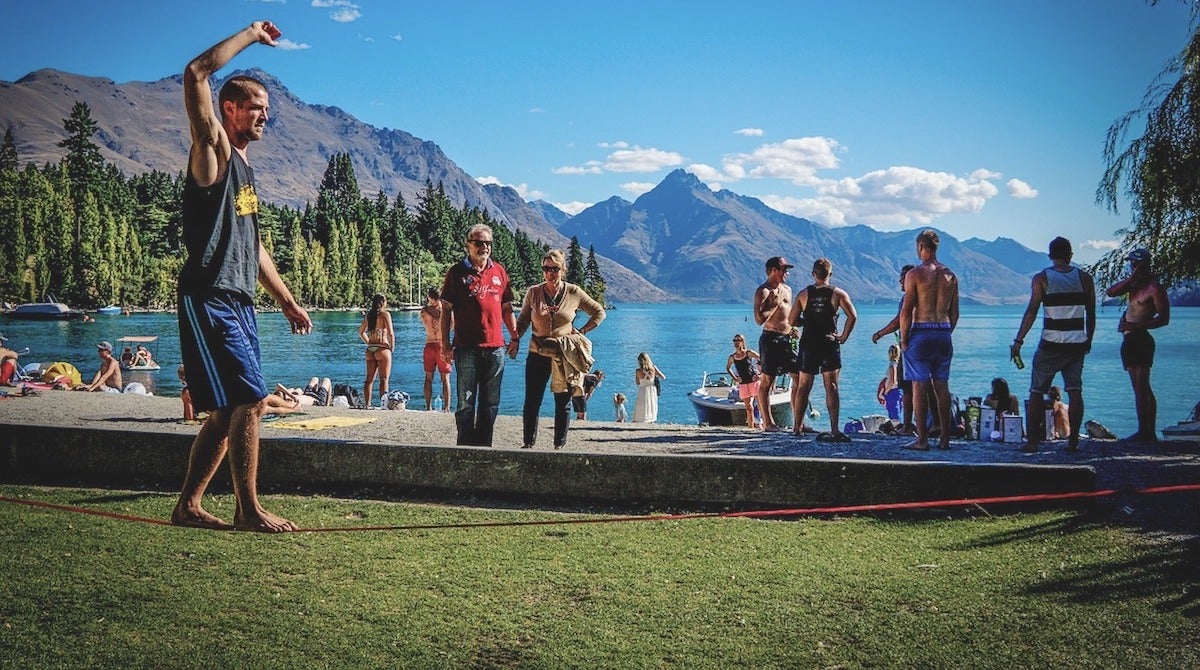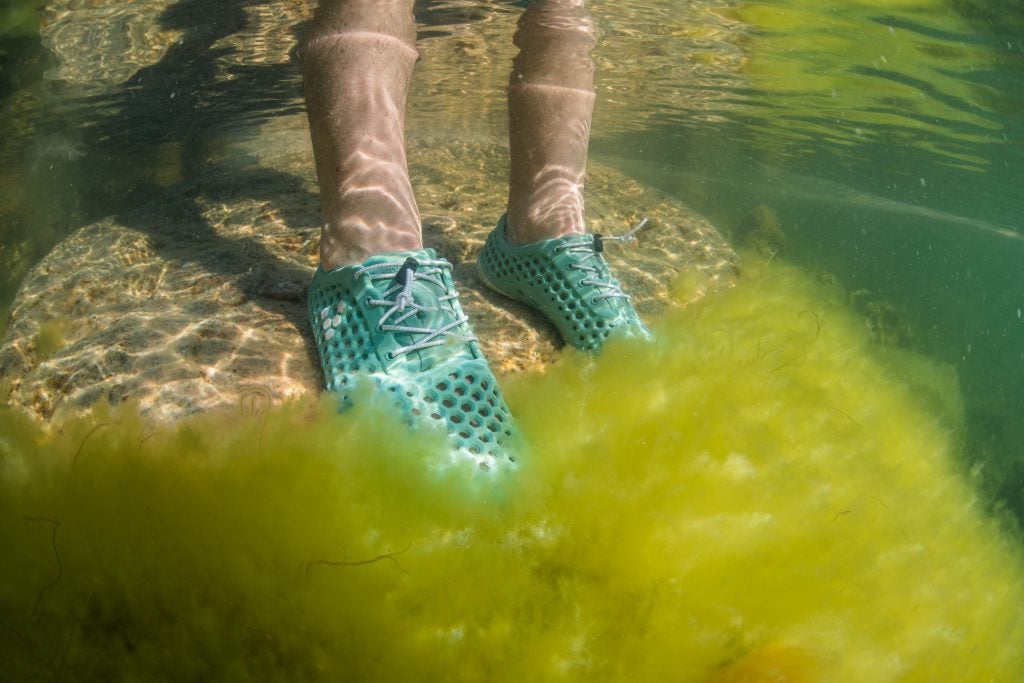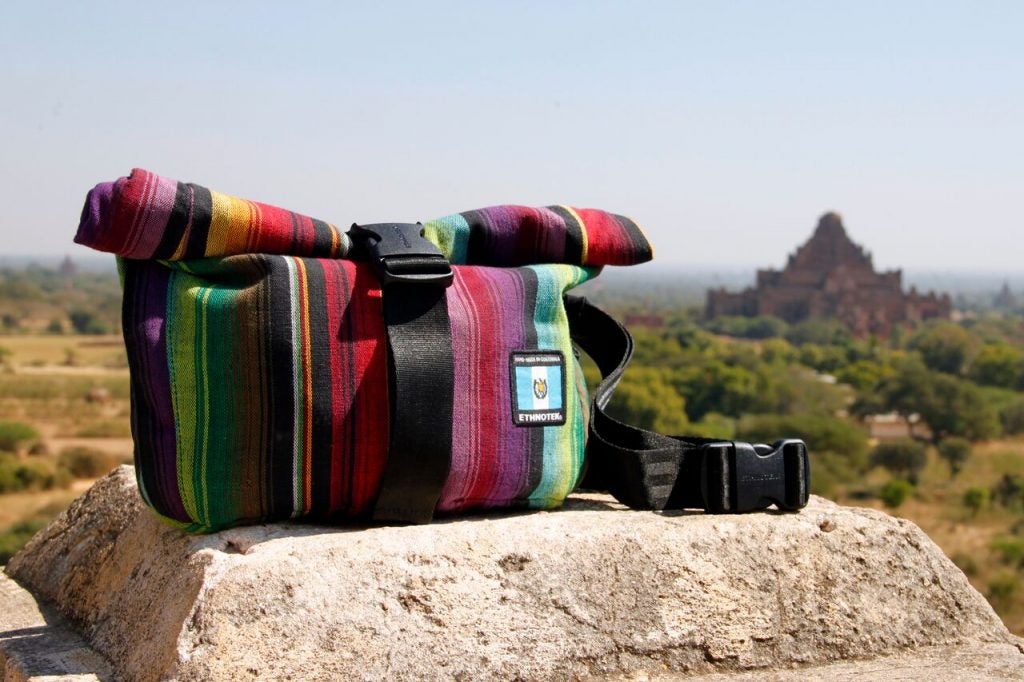Campers are tying up slacklines between two trees for this test of balance and core strength. If you want to give it a try, it’s simple to get started.
This article is brought to your by our friends at Vivobarefoot, whose minimalist shoes are perfect for embracing your surroundings — on the campground or high above it.
Maybe you’ve watched jaw-dropping shots of highliners crossing canyons on Instagram, or spotted campers stringing up their line between two trees.
However you first learned about slacklining, you might be curious about how it works.
Do you wear slackline shoes or go barefoot? What do highliners do to stay safe if they slip? What gear do you need to slackline? Slacklining can seem really intimidating, but it’s actually very simple to get started. (And you definitely don’t have to start over a canyon.)
Slacklining got its start in Yosemite in the 1970s as a way for rock climbers to improve their balance, leg, and core strength. Eventually it grew beyond its rock climbing roots into a sport all its own. A decade in, slacklining got even more hardcore with the advent of highlining, when Scott Balcom traversed a line from the Lost Arrow Spire in 1985. Now both sports have spread all over the world and taken on a culture of their own.
How to Start Slacklining
The good news is that, unlike many outdoor sports, slacklining doesn’t require a huge upfront investment in gear or gym memberships. All you really need is a slackline (webbing), a means of producing tension on the line (a ratchet or oval carabiners), and a couple anchor points (protect trees with old towels or wood where the rope touches).
You can buy everything you need in a single kit, or cobble it together from your rock climbing gear. While there are a lot of variations, depending on whether you want to go short distances or long, simply walk the line or do tricks, try a beginners setup or your own “primitive style” rigs. There’s a reason you see people slacklining in parks on sunny days— the setup is no more involved than your average hammock.
There are plenty of videos online that will show you different techniques for setting up a slackline.
That’s it! Besides a line, a ratchet, and a couple trees (or rocks, or canyon walls, etc.), you don’t need much else to slackline. You don’t even need special slacklining shoes. Most people learn to slackline barefoot. It’s easier to get a feel for the webbing and to work the stabilizing muscles in your legs and feet that way.
Part of the appeal of slacklining is what an incredibly sensory experience it can be. Many enjoy the sensation of their feet connecting with the line. Our feet have thousands of nerve endings to feel for the nylon and the air all around. The tiniest movements and weight shifts will affect how the webbing feels beneath you — and your balance. It forces you to focus, and connect with your surroundings.
Slackline Shoes
That said, many advanced and professional slack and highliners do wear ultra-minimalist footwear on the line. There’s no official “slackline shoe,” but you can look for a pair of shoes with zero tred, a super thin sole, and extreme flexibility, like the Vivobarefoot Stealth or Primus lines. These de facto slacklining shoes protect the feet, improve traction, and make it easier and safer to do tricks like jumps, bounces, flips, and more.
Don’t let those fancy moves make you think that slacklining isn’t easy to pick up, however. It is! At its heart, slacklining is as simple and complex as putting one foot in front of the other on a narrow, flexible surface.
Campers are often in great spots to try slacklining, what with all those trees around. The next time you’re trying to find a camping site, pick one with trees that are close enough to string up the slackline, with a clear area beneath them.
Slacklining is a great way to enjoy downtime at your campsite, just like it first filled the time between climbs for ’70s dirtbags at the crag. You and your friends can take turns walking lines after a day of tough pitches or refreshing hikes. Stretch your muscles, use your body in a new way, and swap stories. Just remind yourself that slacklining isn’t limited to cool kids or circus freaks. Anyone can learn to love it!
The Dyrt is the only camping app with all of the public and private campgrounds, RV parks, and free camping locations in the United States. Download now for iOS and Android.Popular Articles:
Articles on The Dyrt Magazine may contain links to affiliate websites. The Dyrt receives an affiliate commission for any purchases made by using such links at no additional cost to you the consumer.



